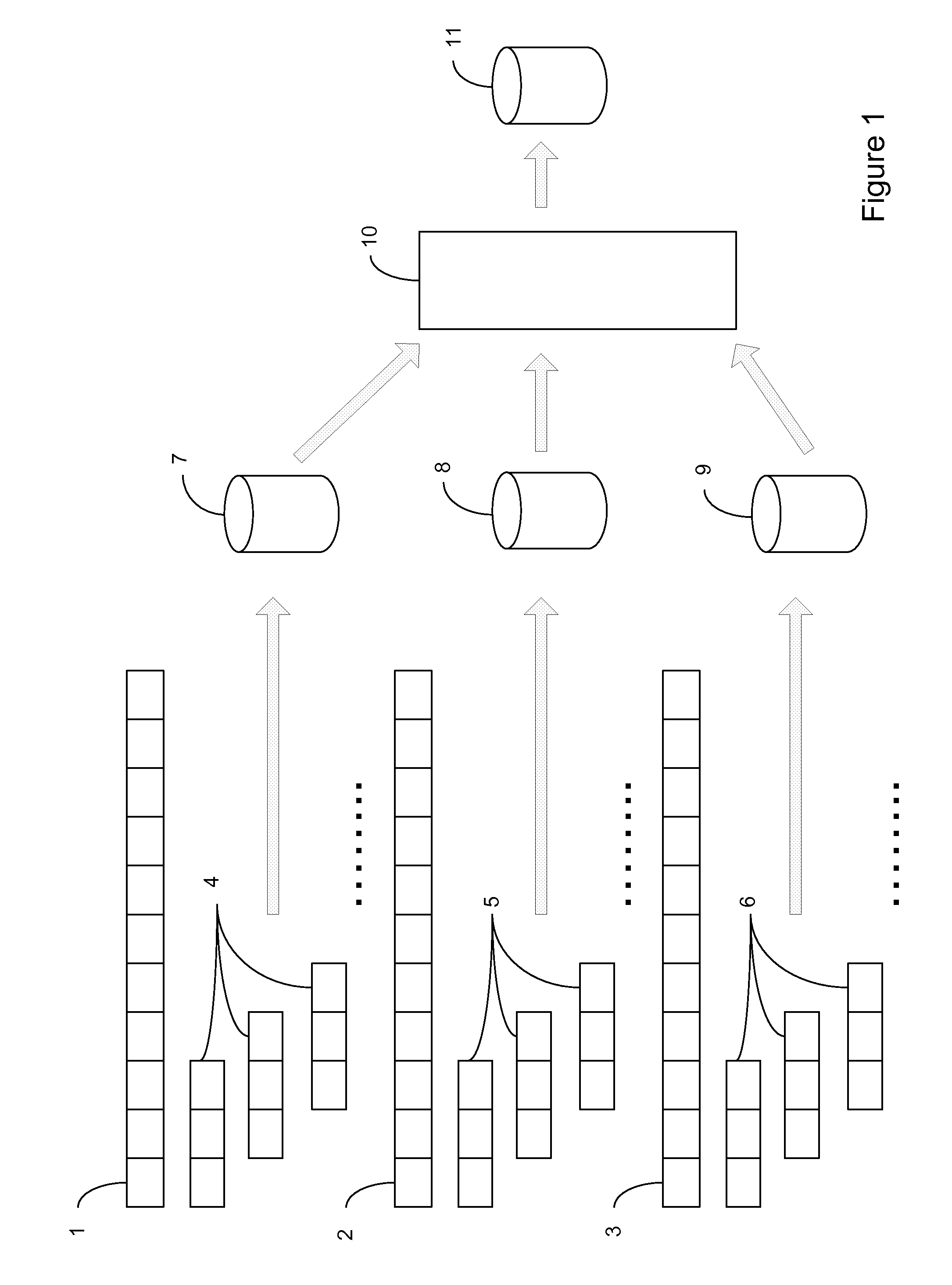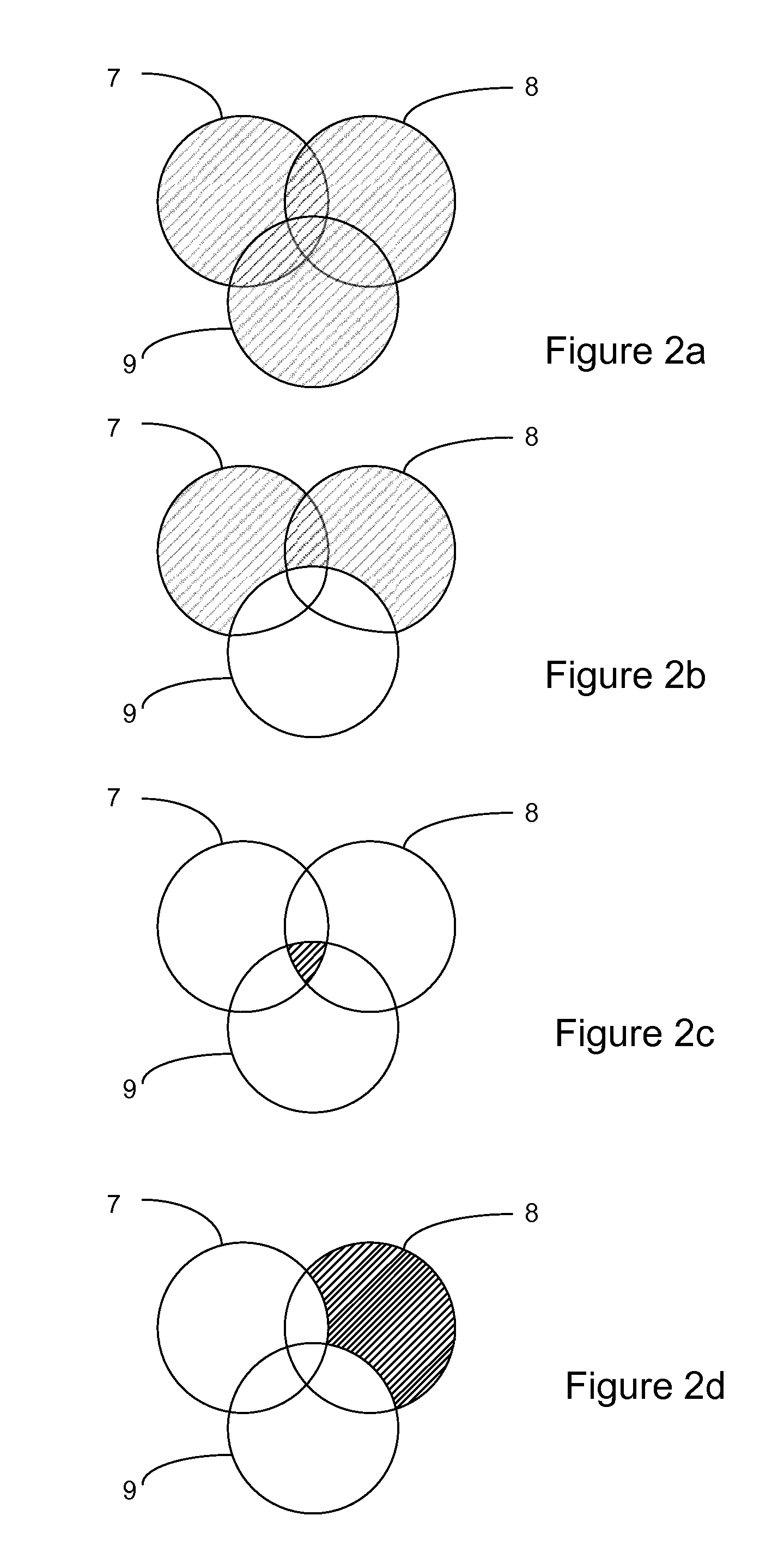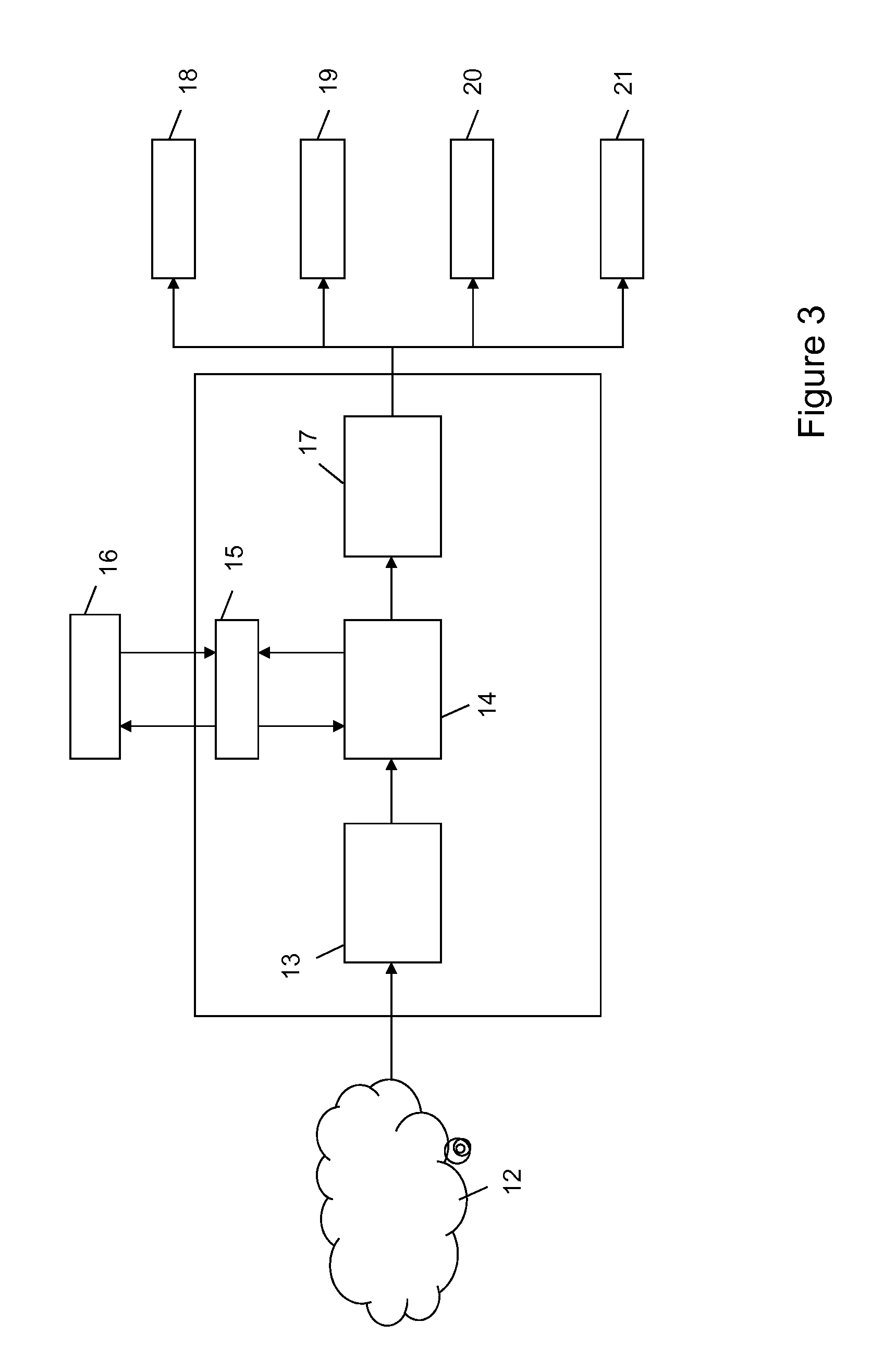Methods of characterizing, determining similarity, predicting correlation between and representing sequences and systems and indicators therefor
a sequence and similarity technology, applied in the field of sequence and similarity characterization, can solve the problems of time-consuming and slow, systematic and random introduction of errors into data, and achieve the effect of speeding up the identification of unique index values
- Summary
- Abstract
- Description
- Claims
- Application Information
AI Technical Summary
Benefits of technology
Problems solved by technology
Method used
Image
Examples
Embodiment Construction
[0065]Referring to FIG. 1 a schematic diagram shows a method for forming a database of characterizing index value(s). In this example sequences 1, 2 and 3 have a simple sliding window applied to them to produce index values 4, 5 and 6. It is to be appreciated that this is a pictorial illustration to assist understanding and does not necessary reflect any physical implementation. It will be appreciated that there may be any desired number of sequences and associated databases.
[0066]The indexes 4, 5 and 6 for each sequence 1, 2 and 3 are stored in index databases 7, 8 and 9 in this example (there could be more where multiple masks are applied). The indexes from databases 7, 8 and 9 are supplied to a rules engine 10 which processes the indexes to produce a characterizing database 11.
[0067]FIGS. 2a to 2d illustrate using Venn diagrams some simple logical operations that may be applied by rules engine 10 to illustrate the method. In the example shown FIG. 2a all index values for all sequ...
PUM
| Property | Measurement | Unit |
|---|---|---|
| threshold | aaaaa | aaaaa |
| threshold | aaaaa | aaaaa |
| threshold | aaaaa | aaaaa |
Abstract
Description
Claims
Application Information
 Login to View More
Login to View More - R&D
- Intellectual Property
- Life Sciences
- Materials
- Tech Scout
- Unparalleled Data Quality
- Higher Quality Content
- 60% Fewer Hallucinations
Browse by: Latest US Patents, China's latest patents, Technical Efficacy Thesaurus, Application Domain, Technology Topic, Popular Technical Reports.
© 2025 PatSnap. All rights reserved.Legal|Privacy policy|Modern Slavery Act Transparency Statement|Sitemap|About US| Contact US: help@patsnap.com



